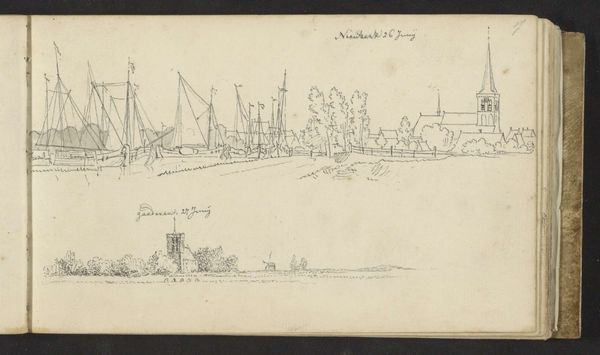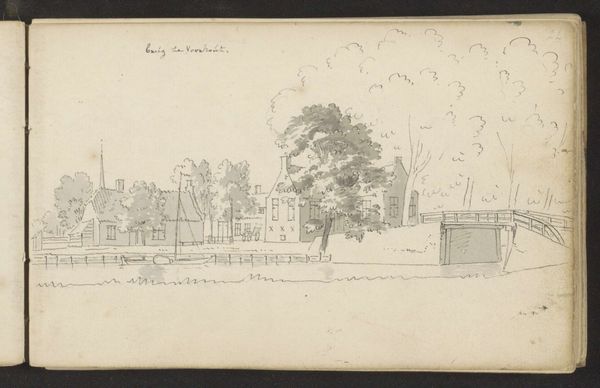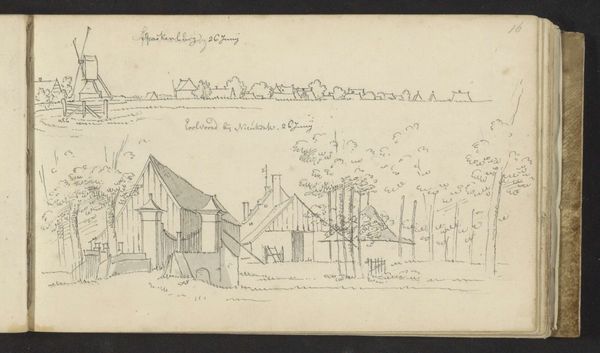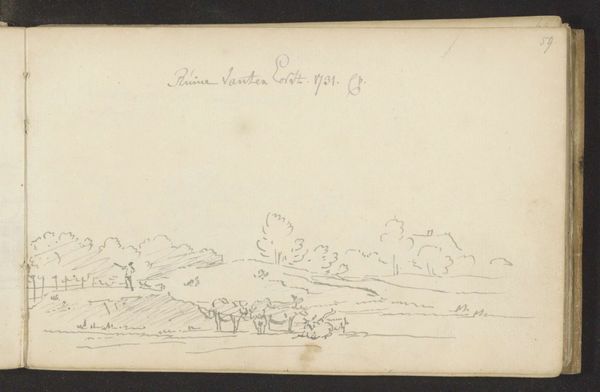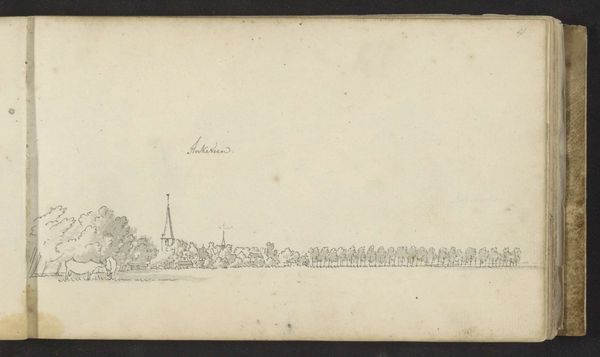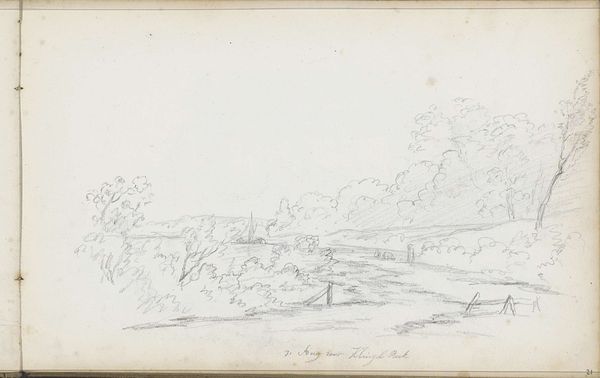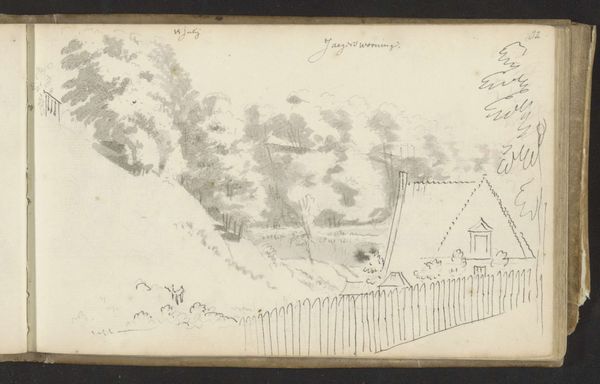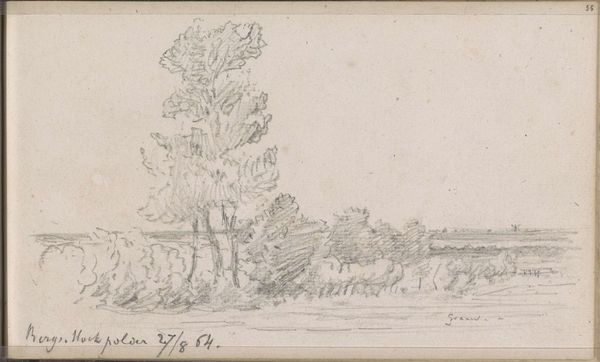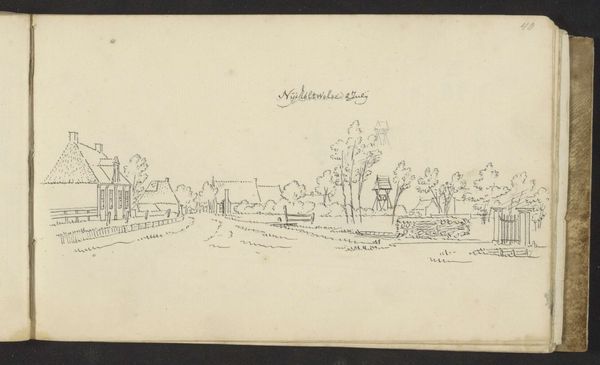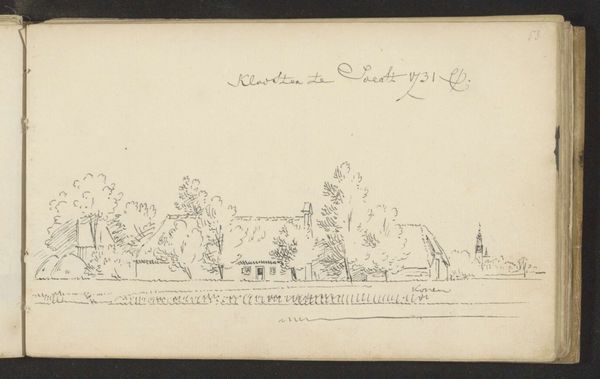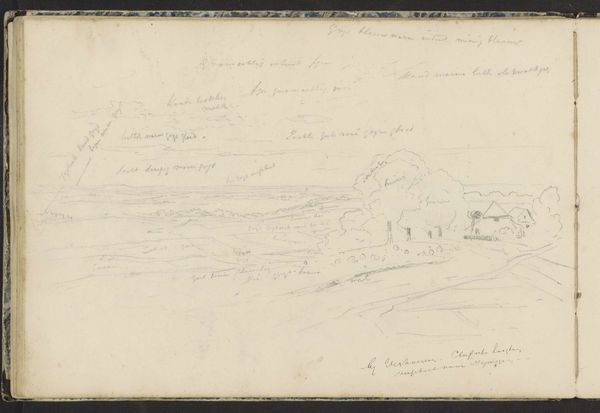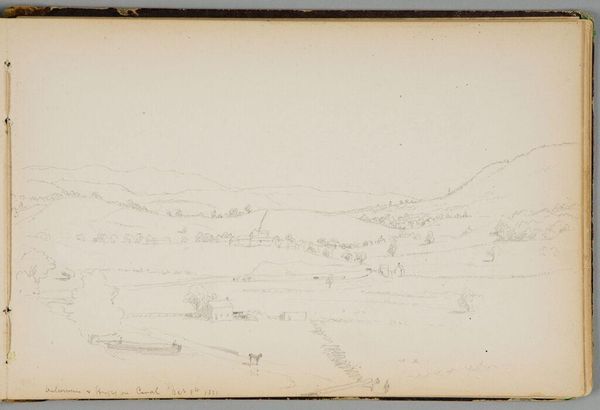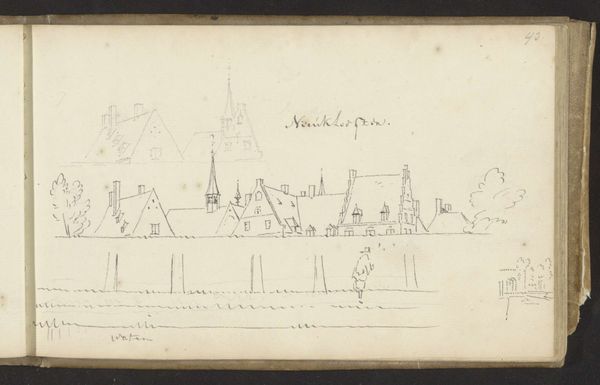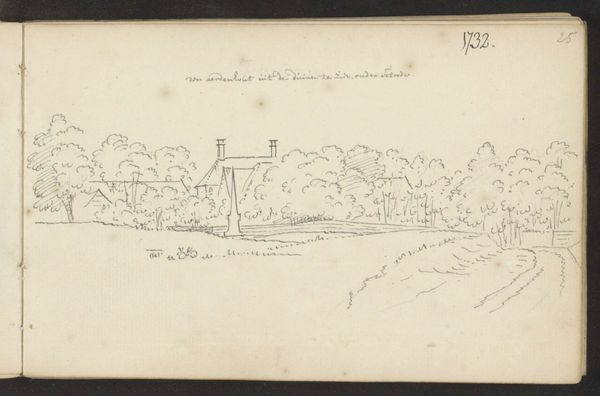
drawing, pencil
#
drawing
#
baroque
#
pen sketch
#
landscape
#
pencil
#
cityscape
Copyright: Rijks Museum: Open Domain
Abraham de Haen the second made this drawing of the Ruin of the Bethanië monastery near Arnhem, in 1731. Graphite, a relatively new material for drawing at the time, makes it possible to render incredibly fine and precise detail. Note the artist's confident use of the medium, with swift marks and erasures describing the scene. This approach reveals a great deal of information with minimal labor. Rather than building up tone slowly, as one might with charcoal, De Haen sketches quickly, capturing the quality of light across the landscape. The result is an image of immediacy. While this drawing may seem modest, consider its social context. In the 18th century, landscape imagery was increasingly popular among the rising merchant class. Drawings like this met a growing taste for picturesque views and country estates. While seemingly effortless, this drawing reflects the artist's skills in production and his engagement with emerging markets. Ultimately it asks us to consider how art making is entwined with wider systems of labor, value, and exchange.
Comments
No comments
Be the first to comment and join the conversation on the ultimate creative platform.
